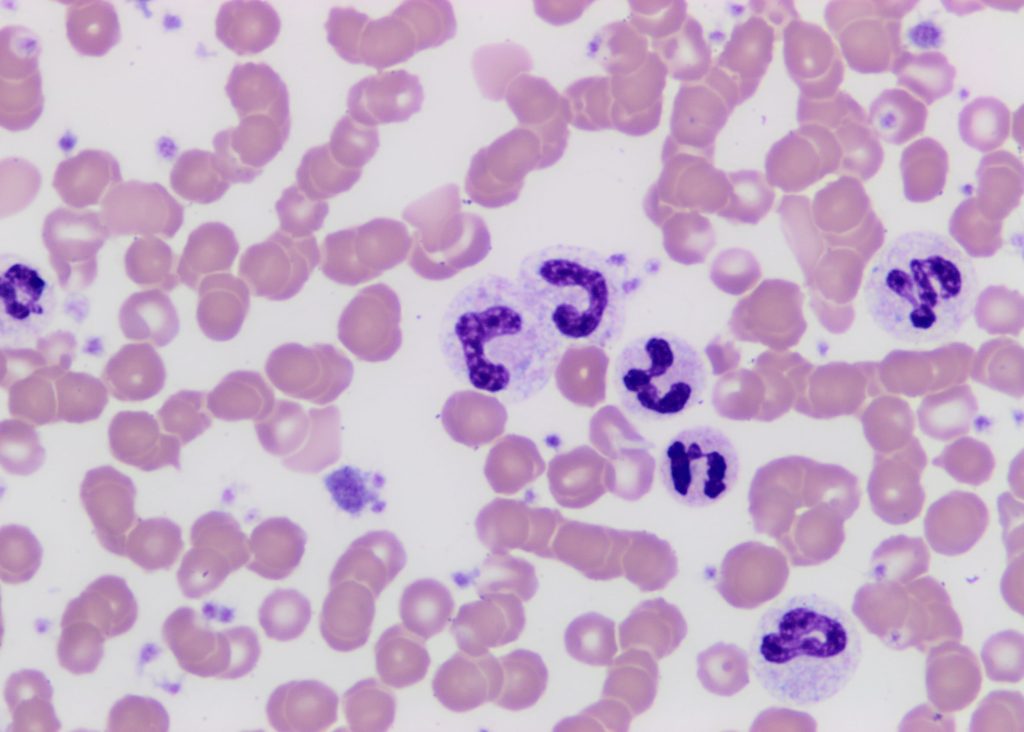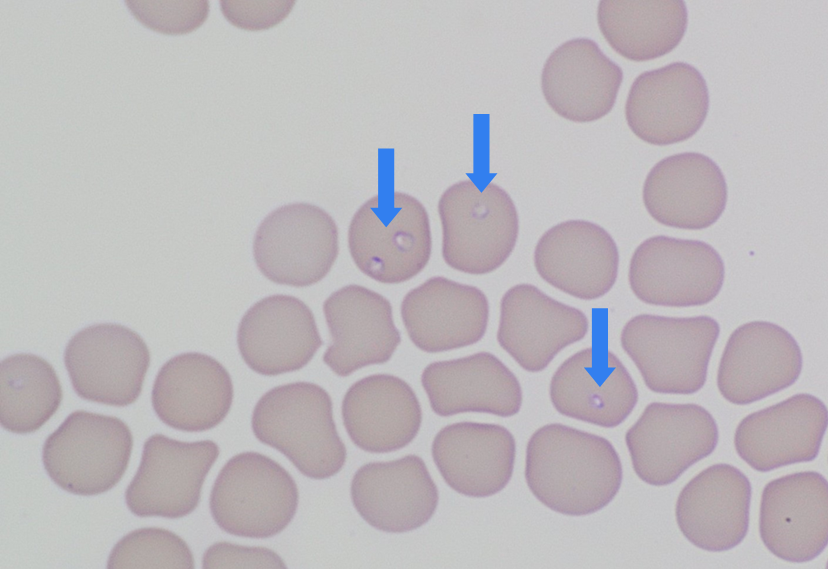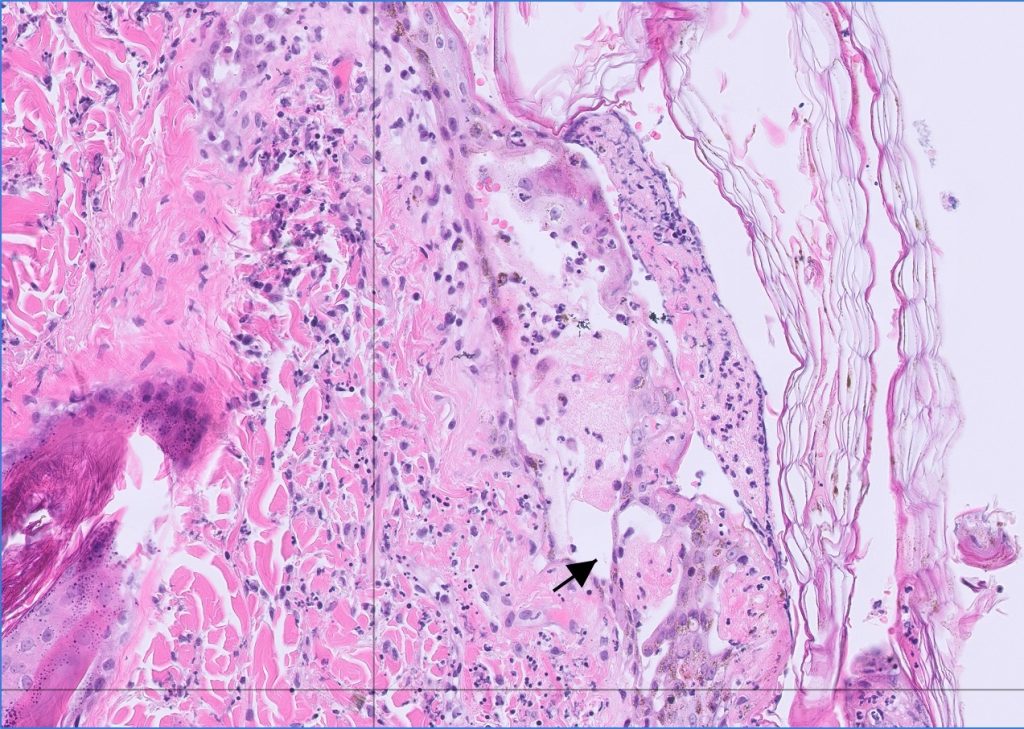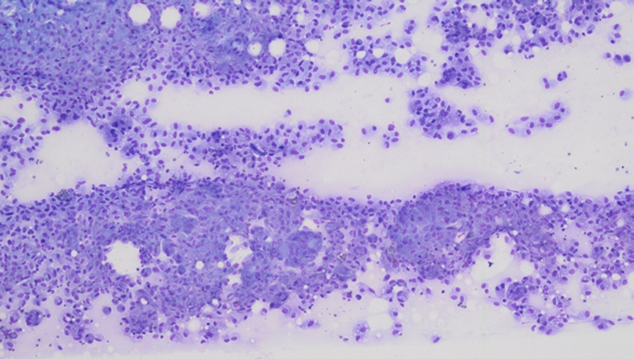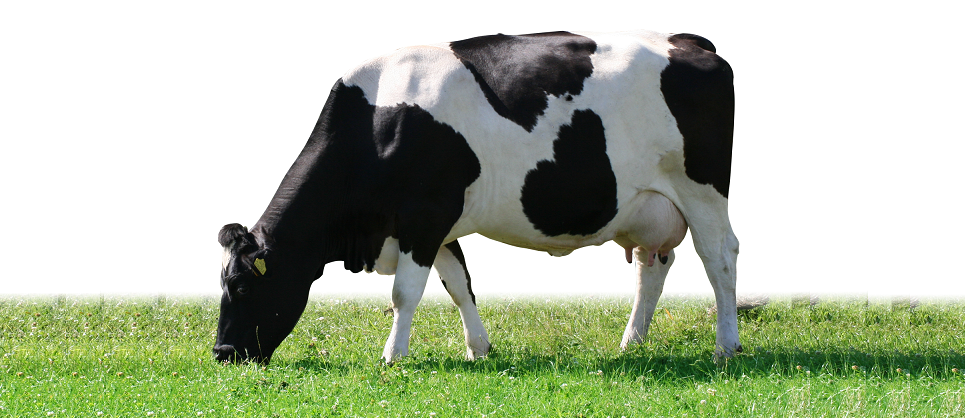Hyposegmentation
Arefeh RavanbakhshPelger-Huët anomaly (PHA) is a genetic condition reported in numerous species characterised by nuclei hyposegmentation of granulocytes (neutrophils, eosinophils, and basophils).Nuclei of granulocytes can appear oval, kidney-shaped, bean-shaped, band-shaped or bilobed.1 This anomaly has been described in dogs, cats, horses, rabbits, and humans.1 It is thought that a defect occurs at the stem cell […]


